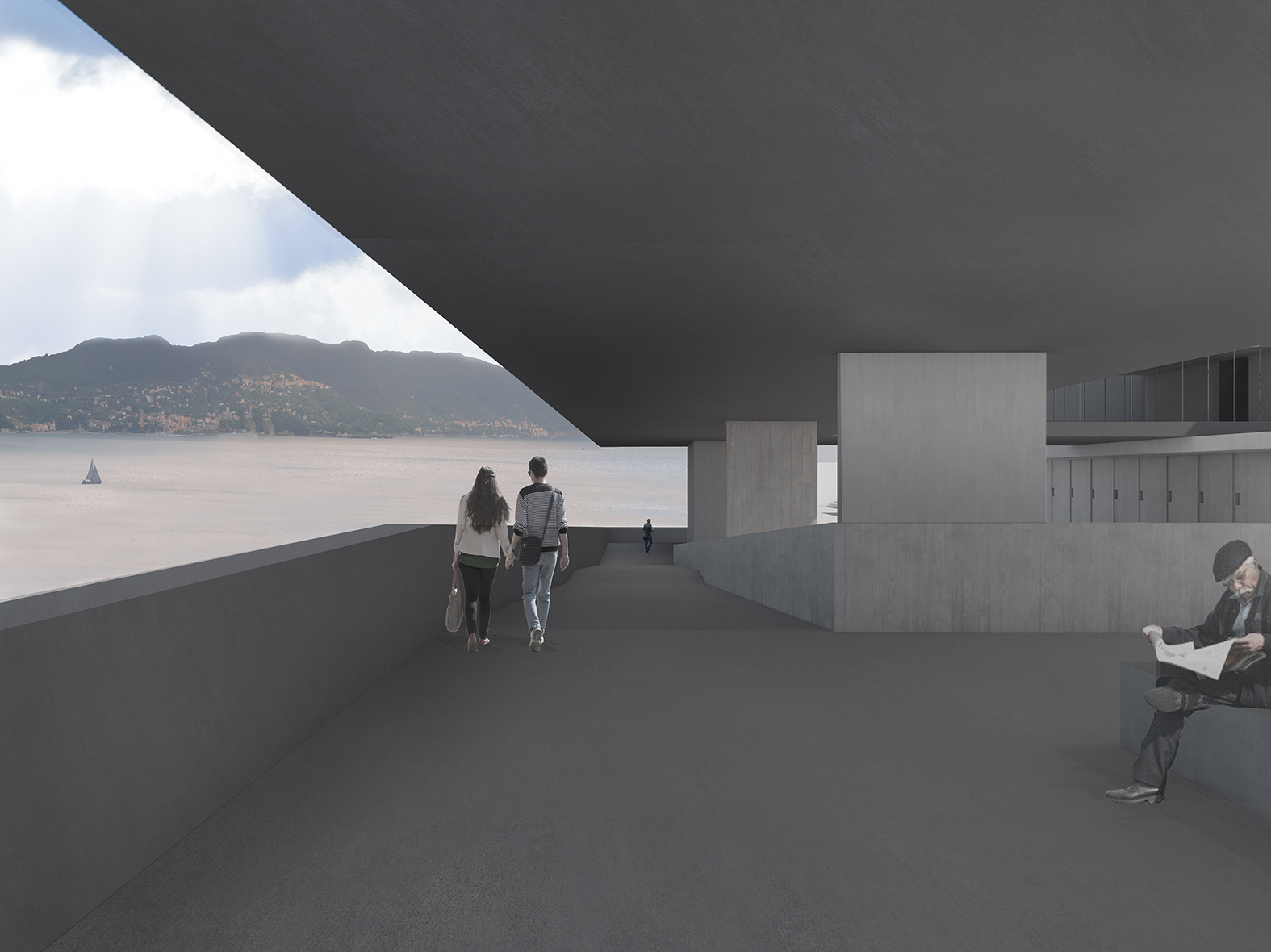Cultural centre on an existing sea-wall | La Spezia, Italy | 2016
Master Thesis
Individual work
Tutors: Emilio Faroldi (Politecnico di Milano), Gabriella Peretti (Politecnico di Torino)
Thinking about climate change and environmental emergencies, a relevant problem which is common to many cities concerns coastline protection; almost in all the world we can see several examples of how sea waves are significantly damaging costs. Coastal cities in the past often built sea-walls to protect their territory, from both waves and military attacks, but in front of recent climate changes the construction of these barriers is currently increasing, creating a new relationship between land and sea.
In recent decades, in the research of new renewable energy systems, energy from the sea has gained a significant importance, focusing in particular to wave power. In this direction, sea-walls could be an interesting means of using the Oscillating Water Column (O.W.C.), a system which allows to generate energy from the rise and fall of water caused by waves and tides in the sea.
The proposal of the project is to use a sea-wall as an architectural opportunity, creating a defence infrastructure which can provide new functions for the coast and also energy through wave power. The selected location is the Gulf of La Spezia, in Italy, where there is an existing sea-wall built in the 19th century to protect the coast. The definition of the project started with the creation of an orthogonal grid based on the O.W.C. module, building only a part of the sea-wall in order to leave the existing landmark still visible. The composition has many public spaces, as a new waterfront, and the main building is a cultural centre about the sea.



Know more:
